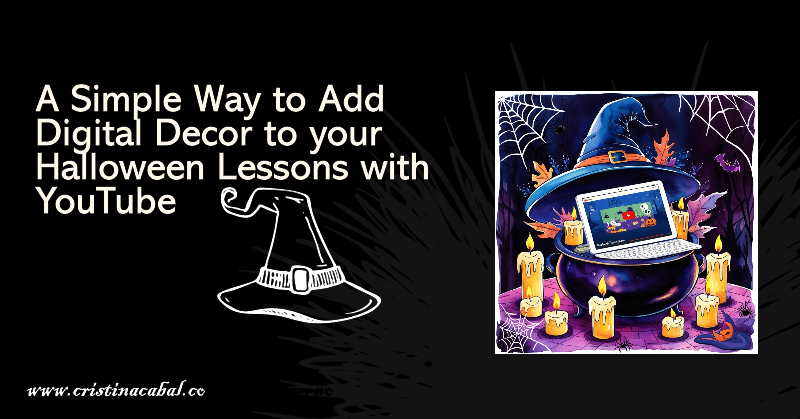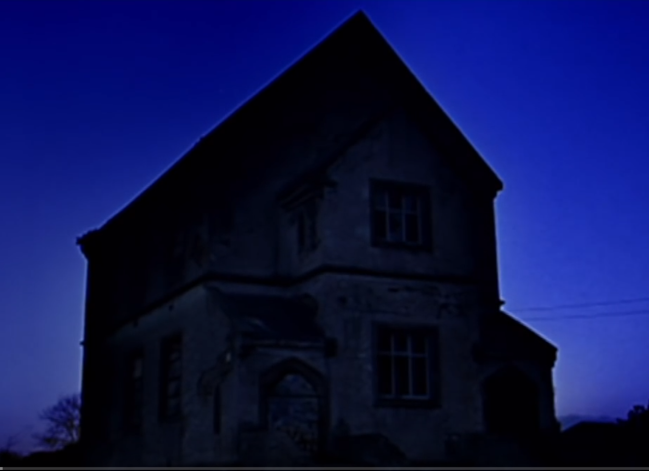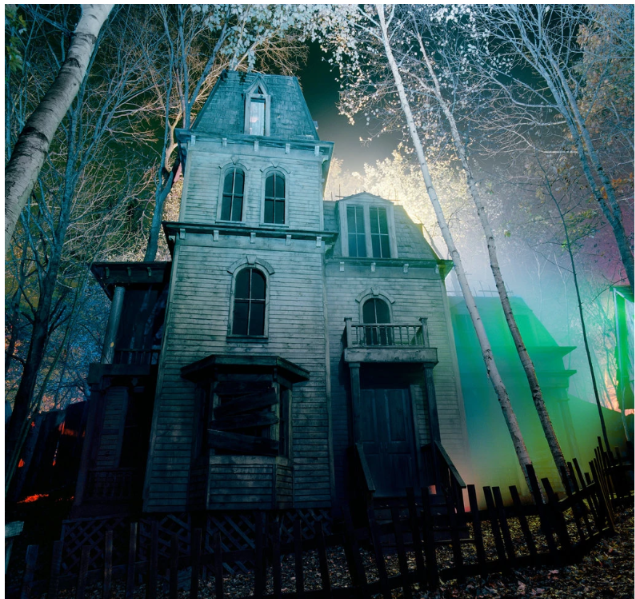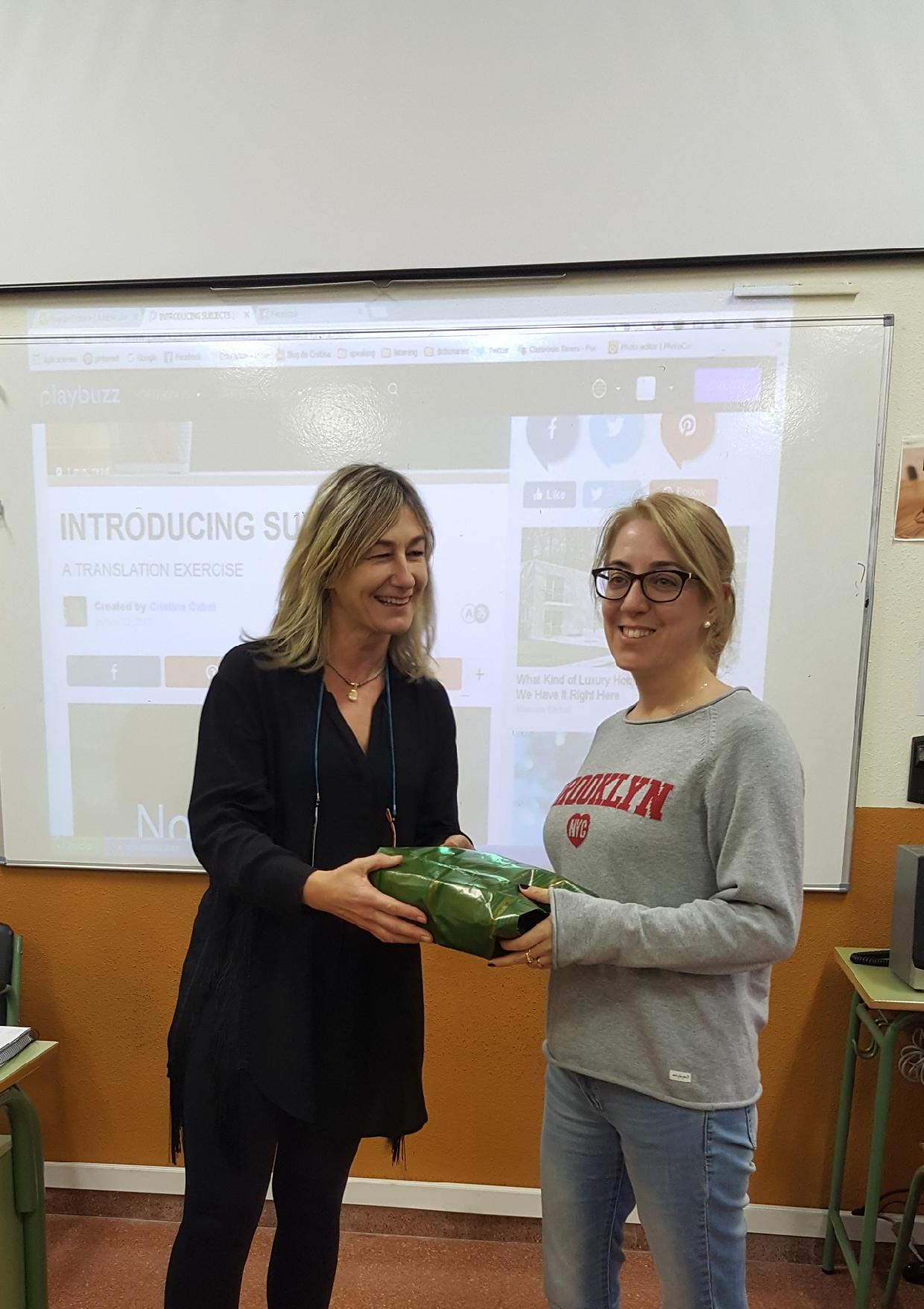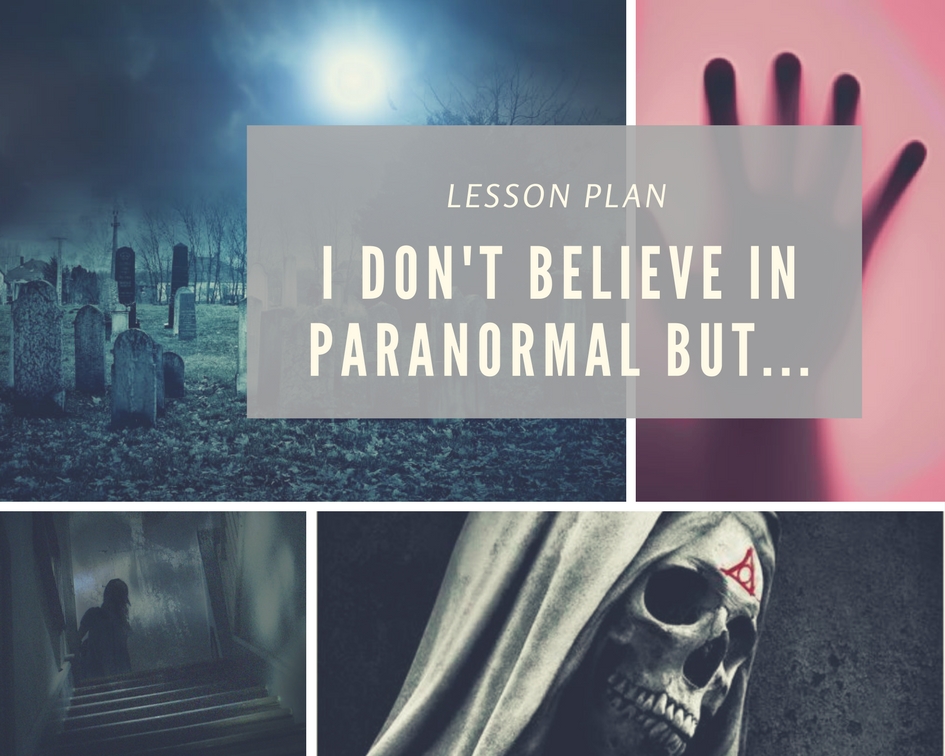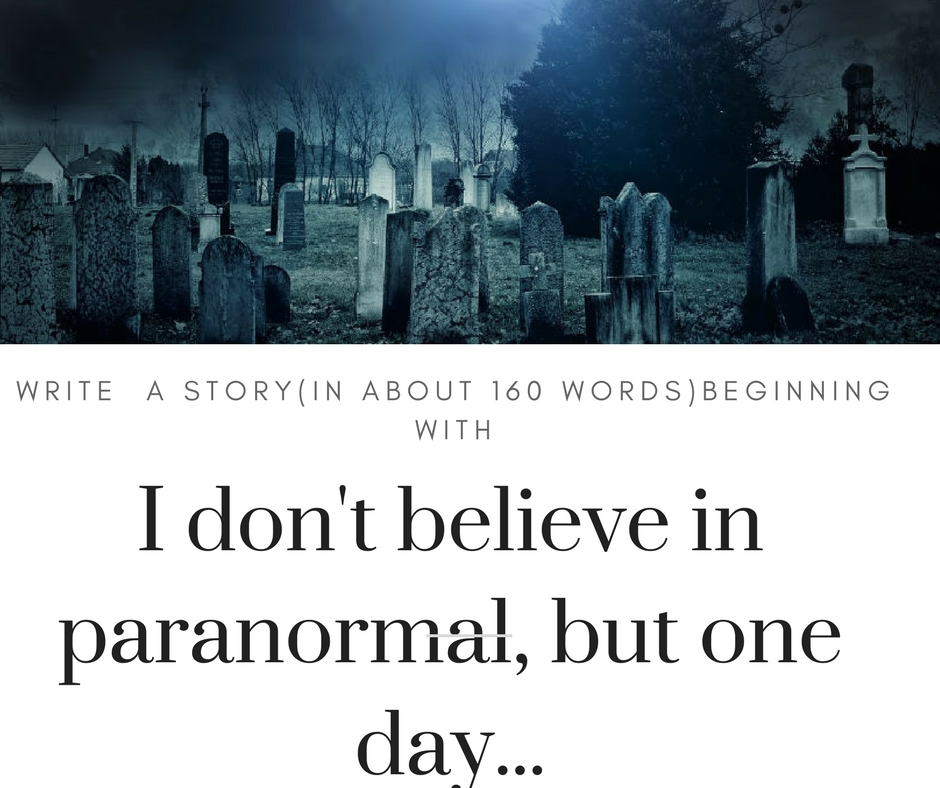This lesson plan aimed at B2 students or + is loaded up with engaging activities, some of which are easily adaptable to other levels.
As you’ve probably noticed over the years, I am not a huge fan of Halloween. In fact, when I was a kid, I didn’t even know what Halloween was. But, even if it’s not my cup of tea, embracing Halloween in the classroom can be a fun and meaningful way to connect with students and broaden their cultural awareness. And this particular combination of activities will surely prove to be a hit in my classes and hopefully, a time-saver for some of you!
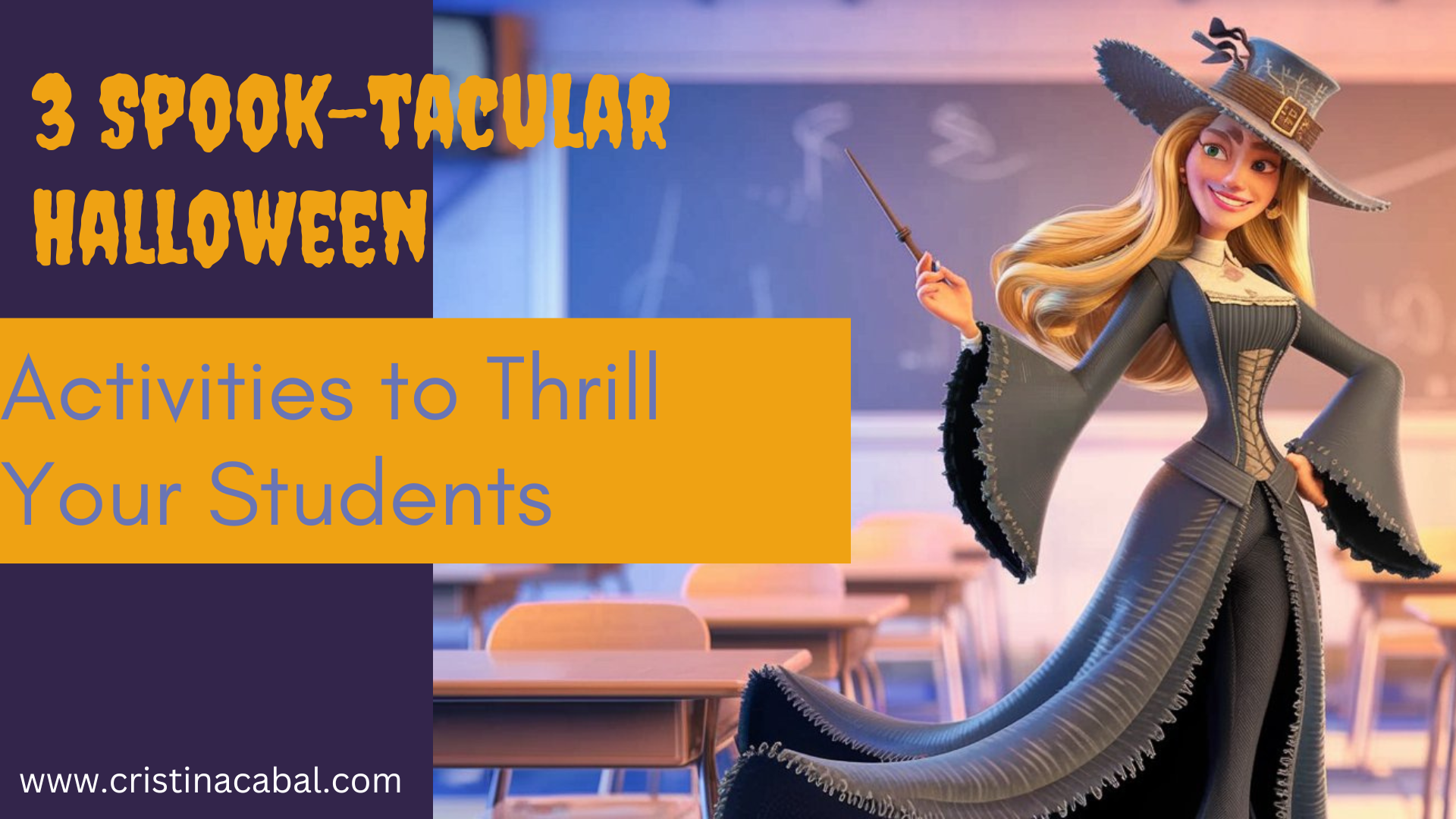
1. Setting the right atmosphere to Tell a Scary Story
Do you have a smartboard in the classroom? Then, you already have some Halloween decor, like this one below,
Right , now that we are in the mood, dim the lights and ask students to think of a time in their lives when they felt fear or anxiety. After about 5 minutes and with just the light from the smartboard, ask students to share their stories.
2. Short Film: THE TEN STEPS
In this 10-minute film Katie, a young girl, is babysitting her younger brother Steven while her parents are out for the evening.
Useful vocabulary
- A fuse box is an electrical panel that contains fuses, which protect circuits from overloads.
- To give the creeps means to make someone feel uncomfortable, scared, or uneasy.
- To be haunted means to be visited or troubled by a ghost or spirit. It can also refer to a place that has a spooky or eerie atmosphere.
Ask students these three questions related to what happens at the beginning of the film
- Why is Katie babysitting her brother Steven?
- Why does Katie panic when asked to go to the cellar for the fuse box?
- What is the backstory behind Katie’s fear of the cellar?
Enjoy this short film; one of the best, in my opinion!
3. Debate on the Global Adoption of Halloween Traditions
In this activity, students argue for or against the global adoption of Halloween traditions. This activity will, hopefully, challenge my students to use advanced language skills, including persuasive techniques, formal language, and complex argumentative structures.
Expanding their Vocabulary. In this activity and with the aim of expanding their vocabulary, students will be asked to use the verbs in the exercise below
The debate
How to do it
- Divide the class into two teams: one supporting the global adoption of Halloween, the other opposing it.
- Give those in favour these three ideas to get started and some preparation time to organise their ideas
Potential arguments for global adoption:
- Cultural exchange and understanding
- Economic benefits for businesses
- Entertainment and creative expression
- Give those against these three ideas to get started
Potential arguments against global adoption:
- Cultural imperialism and loss of local traditions
- Commercialization and consumerism
- Religious or cultural conflicts in some societies
- Pair up students to discuss their opposing views on the subject
- After the debate, have a class discussion to reflect on the arguments presented.
I hope you have enjoyed this 3 Spook-tacular Halloween Activities.
